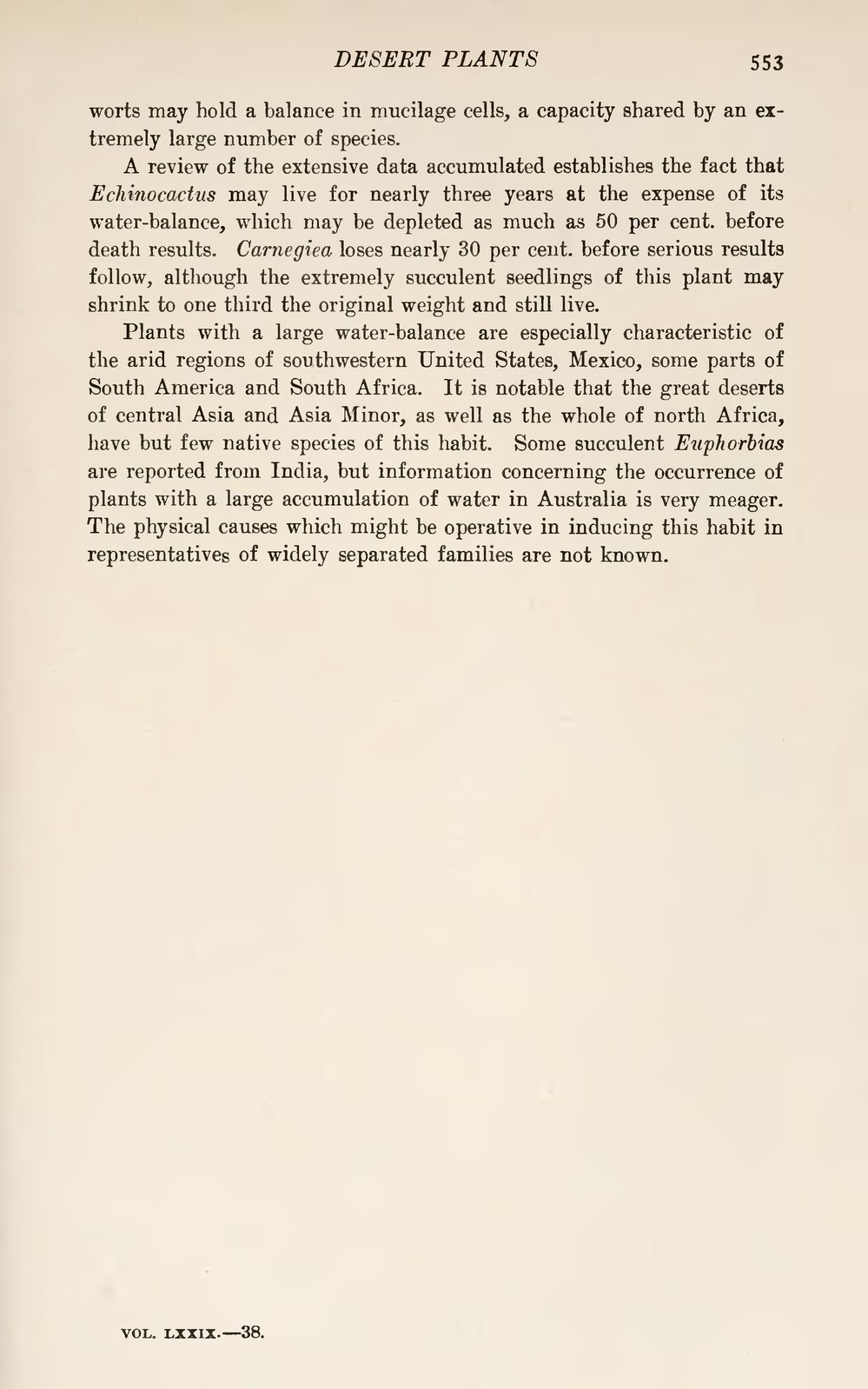worts may hold a balance in mucilage cells, a capacity shared by an extremely large number of species.
A review of the extensive data accumulated establishes the fact that Echinocactus may live for nearly three years at the expense of its water-balance, which may be depleted as much as 50 per cent, before death results. Carnegiea loses nearly 30 per cent, before serious results follow, although the extremely succulent seedlings of this plant may shrink to one third the original weight and still live.
Plants with a large water-balance are especially characteristic of the arid regions of southwestern United States, Mexico, some parts of South America and South Africa. It is notable that the great deserts of central Asia and Asia Minor, as well as the whole of north Africa, have but few native species of this habit. Some succulent Euphorbias are reported from India, but information concerning the occurrence of plants with a large accumulation of water in Australia is very meager. The physical causes which might be operative in inducing this habit in representatives of widely separated families are not known.
